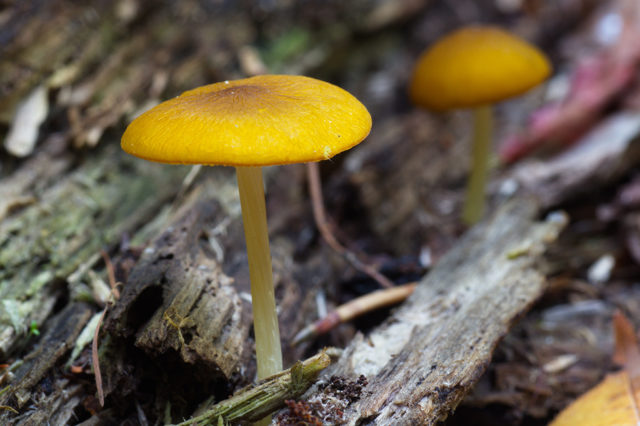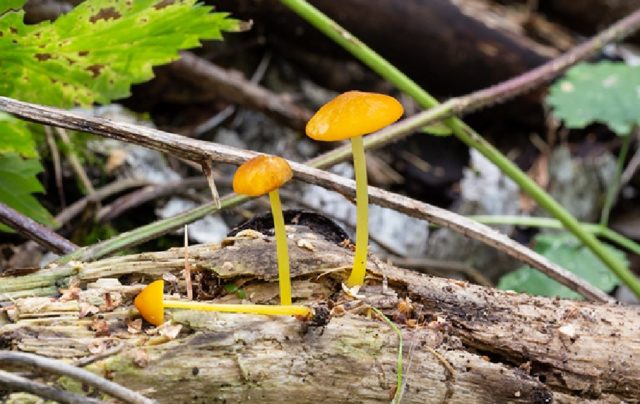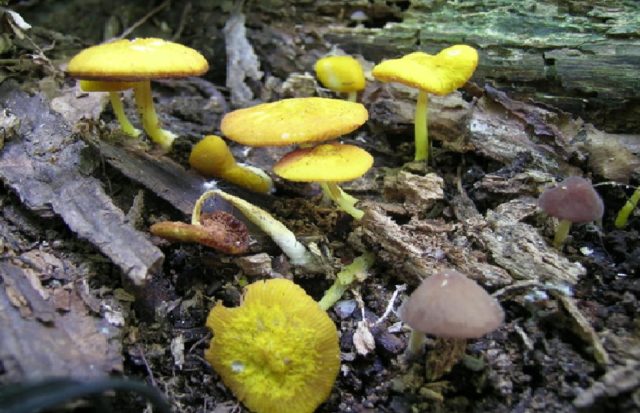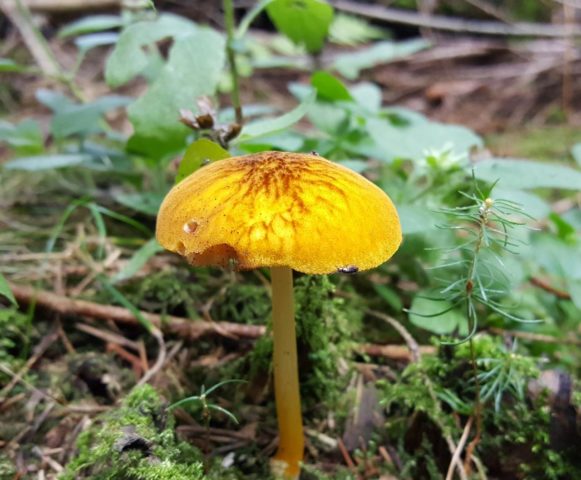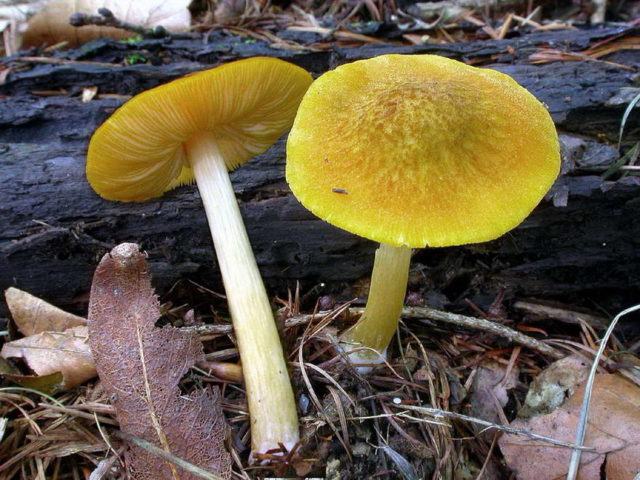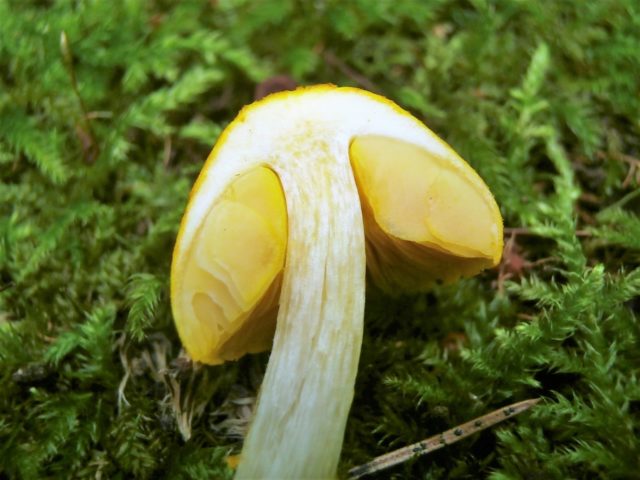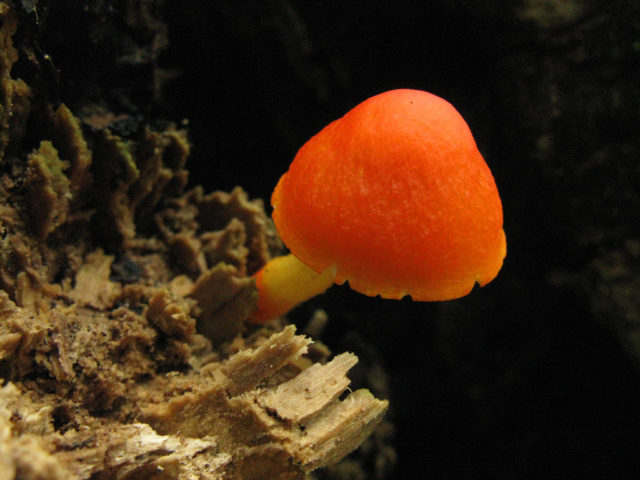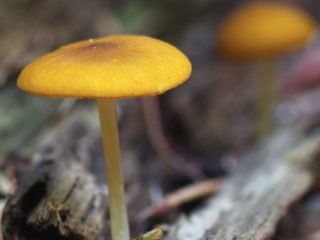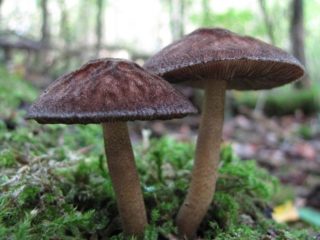Content
The golden-veined plyutey is a lamellar representative of the mushroom kingdom, belonging to the Pluteev family. The Latin name is Pluteus chrysophlebius. It is very rare, it is considered inedible.
What does a golden-veined rogue look like?
Spit golden-veined (shown in the photo) is referred to as small mushrooms. The total height varies between 5-6 cm. The fruit body does not taste good, and the smell of the pulp is barely perceptible. The aroma can be felt if you thoroughly grind a piece of the cap. This smell is comparable to the weak evaporation of chlorine.
Description of the hat
The caps of young specimens are wide-conical, in old ones they are flatter, there may be a bulge (tubercle) in the center. The yellow color is brighter in young mushrooms. The color palette ranges from deep yellow to golden straw. With age, a brown tint is added to the color, but the yellowness does not disappear. The flesh of the cap is thin, almost transparent along the edge, finely ribbed, so the color seems to be dark ocher. At the break, the pulp is light, with a slight yellowness.
The diameter of the cone-shaped cap also changes with age. The indicator ranges from 1 to 2.5 cm.
The surface of the mushroom is shiny, like a varnished one due to moisture. In youth, the cap has “venousness”, which is visually created by wrinkles in the center of the cap. By old age, the bruises go away, and the cap becomes smooth.
The plates located under the head of the golden-veined spit have a whitish tint; after the ripening of the spores, the color changes, becoming pinkish. The plates have rudimentary plates.
Leg description
The length of the leg of the golden-veined spit usually does not exceed 50 mm, the smallest specimens are 20 mm high. The stem is usually straight, cylindrical, very fragile, its diameter is from 1 to 3 mm. Smoothness is noted on palpation. Color - pale yellow, sometimes whitish. At the base, you can see a white substance resembling cotton wool - these are the remains of the basal mycelium.
The golden-veined spit is noted to have no ring, which makes it possible to distinguish it from other varieties.
Where and how it grows
This type of mushroom is very rare, so it is impossible to indicate the exact distribution area. Single representatives of the species were found on different continents, in countries with different climates. The appearance of golden-veined specimens was recorded in Europe, Asia, and the USA. In Russia, mushrooms can be found in areas with deciduous and mixed forests. Saprophytes are found on stumps and snags of deciduous, less often coniferous trees. They can form small groups, but are more common one at a time.
Is the mushroom edible or not
Due to the low prevalence of the fungus, there is no information about its edibility. In some sources it is indicated that the golden-veined roach is edible, in others it is classified as conditionally edible due to the low quality of the pulp and the unpleasant odor. But most are still convinced that the mushroom is inedible.
The bright colors of the cap mislead mushroom pickers. Many are afraid to collect the fruiting bodies of spitters, mistaking them for poisonous. In order not to suffer from an upset stomach and allow the mushrooms to spread on the planet, it is better to refuse to collect the spit of the golden vein.
Doubles and their differences
Among the plutey, there are several species that differ in the bright colors of the cap. They have a similar structure, but they can be recognized by their dimensions.
The twins of the golden-veined spit are considered:
- Gold-colored whip. Its main difference is its larger size. This species has more brown shades in color. It belongs to edible specimens, but due to its low taste and rare occurrence, it is practically not used for food.
- Lion yellow rogue. It has a velvety cap, in the center of which we can distinguish a reticular rather than a “venous” pattern. Wrinkling appears in young fruiting bodies and does not disappear with age. It is listed among the poorly studied, but edible specimens.
- Fenzl's Clown - one of the brightest representatives of the genus. Its peculiarity is the presence of a ring on the leg. Due to its rarity, it is included in the Red Book. There is no evidence of toxicity.
- Orange-wrinkled rogue. A distinctive feature is the presence of orange tones in the color. A rudimentary ring can be discerned on the stem. The edibility, as well as the toxicity, has not been confirmed, therefore it is not recommended to collect.
Conclusion
The golden-veined roach is a bright yellow representative of the mushroom kingdom. Its collection is difficult due to its low occurrence, and its edibility remains in doubt. The existing twins have a similar color, differ slightly in size, and are poorly understood. The edibility of doubles has also not been proven.
